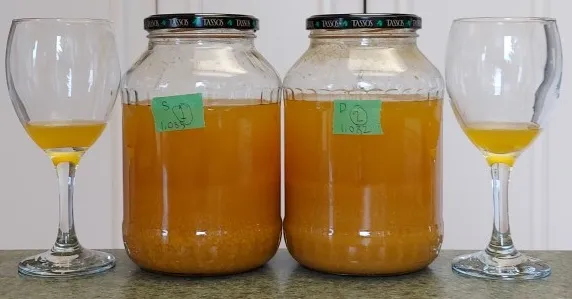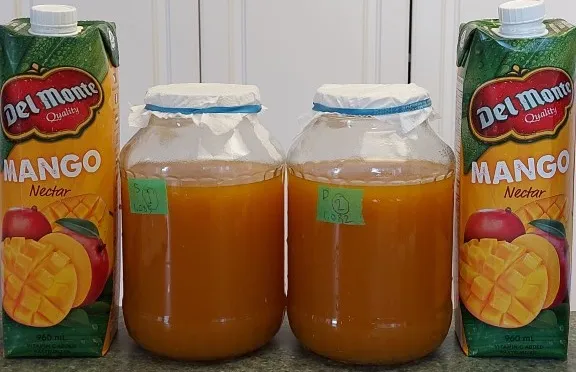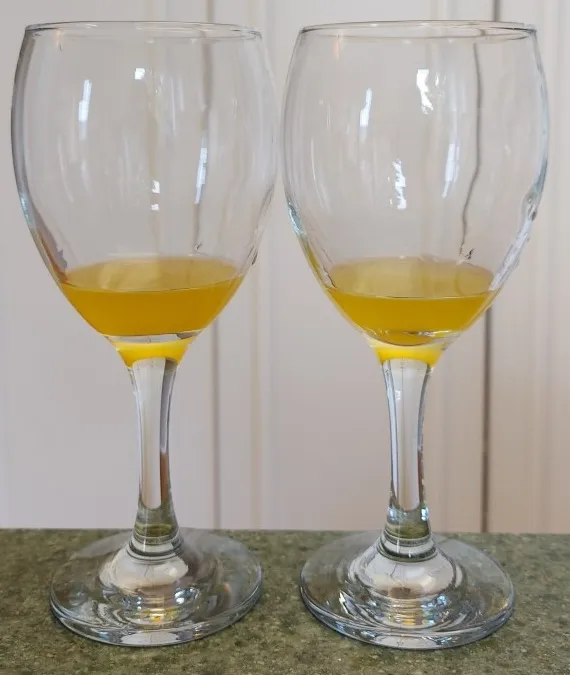
This is my first test in making mango nectar wine which yielded pretty good results overall. Both bottles finished with over 12% alcohol.

Bottle 1
1 liter mango nectar
1/2 cup dextrose + 25% more (less dense than sugar)
1/4 tsp DAP
1/4 tsp yeast nutrient (B vitamins)
1/8 tsp bentonite
1 tea bag steeped in 1/2 cup boiling water (for tannin)
1/16 tsp Red Star Premier Cuvee Yeast
Original gravity 1.082
Final gravity 0.990
Final alcohol 12.08%
Bottle 2
1 liter mango nectar
1/2 cup sugar
1/4 tsp DAP
1/4 tsp yeast nutrient (B vitamins)
1/8 tsp bentonite
1 tea bag steeped in 1/2 cup boiling water (for tannin)
1/16 tsp Red Star Premier Cuvee Yeast
Original gravity 1.085
Final gravity 0.990
Final alcohol 12.47%

For more details on the method check out my blog. The quick instructions are below.
After the ingredients are added cover the top with breathable paper as the yeast are multiplying, after 2-5 days add an airlock or loose cap with a plastic bag and elastic band. The wine should be fully brewed in 2-3 weeks. Leave in a warm, dark area until all bubbling stops.
Results:
Bottle 1
There's a nice fruity mango smell, it's dry, sour, with some residual mango flavor. I would count this as a win. The recipe still needs work to balance out the sourness but it fermented well overall and finished lower (0.990) than the other juices I have already tried.
Bottle 2
There's a fruity mango smell, not bad but a little off compared to bottle 1. It seems to be lacking some of the natural mango smell of the other bottle. The taste is comparable, sour but a bit more harsh than bottle 1.
Final thoughts:
There's a comical amount of pulp taking up almost half of the jar which greatly reduced the overall amount of finished product which doesn't make this the most practical juice to use but it's still cheap overall to make. The desirable mango smell was retained which hasn't entirely happened with other juices so far.
I am wondering why it finished at a lower gravity reading than the other juices. Was it because of more airspace in the jar or just because of the ingredients in the juice. I'll test this in the future to see if the 1.5 liter jar will ferment to a lower gravity reading that the 1 liter bottle with the same ingredients.
Please leave your comments and thoughts below. Cheers!